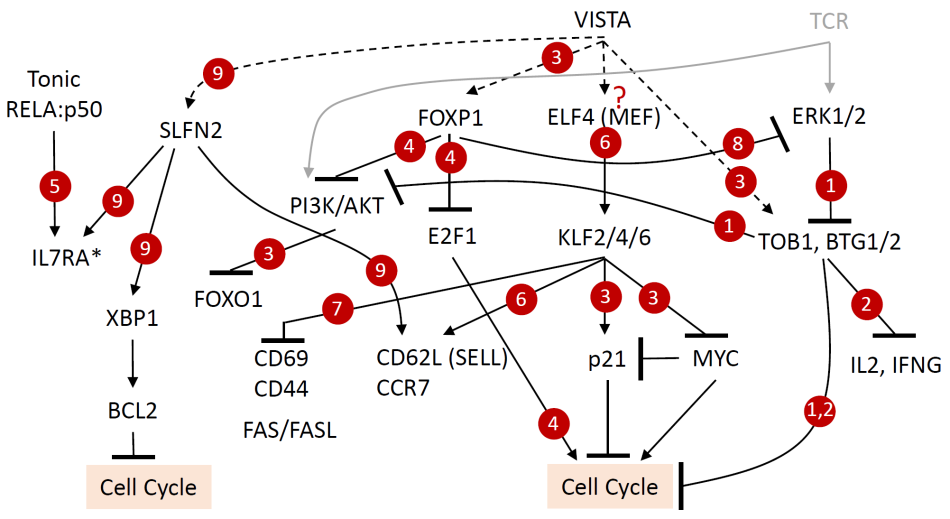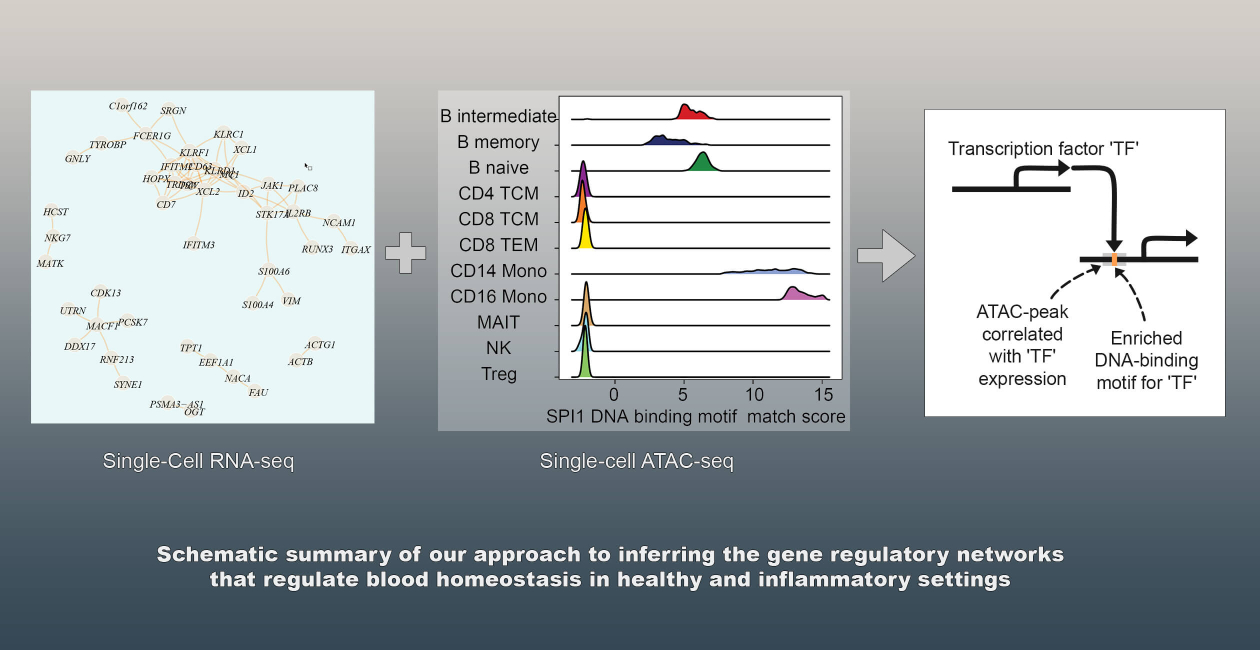The mammalian immune system is constantly undergoing self-renewal while also interacting with environmental cues, self-antigens, the central nervous system and commensal microbiota. How does the healthy immune system maintain a balanced steady state in the midst of all these changes? And how are the regulatory mechanisms that maintain a healthy immune balance impacted in disease?
In general, homeostasis is known to be regulated through combinations of self-reinforcing (positive) and stabilizing (negative) feedback loops. In the immune system, these feedbacks occur at multiple scales, within individual cells, through cell-cell interactions and via organ and organism-level regulatory signals.

We are leveraging recent developments in single-cell omics and high-throughput cytometry to characterize the intra- and inter-cellular regulatory interactions that maintain the balance of blood immune cell frequencies in healthy humans.



